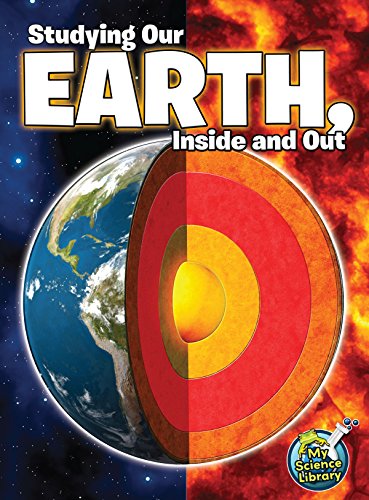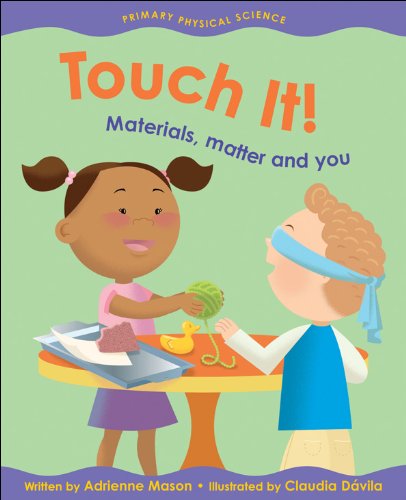-
Changing Matter: Understanding Physical And Chemical Changes
Tracy Maurer
Library Binding (Rourke Educational Media, Aug. 1, 2012)This Title Teaches Students That Everything Is Made Of Matter, And That Physical Changes Create Different Forms Or States Of Matter. Gives Examples Of These Different States In Easy To Understand Text And Introduces Students To The Law Of Conservation Of Mass. T
T
-
Skeletons and Exoskeletons
Julie Lundgren
Library Binding (Rourke Educational Media, Aug. 1, 2012)This Title Explains How Humans And Animals Have A Skeleton To Support The Inner Workings Of Their Bodies And How The Muscle Attached To The Skeleton Helps Us Move. Also Explains How Exoskeletons Have A Skeleton On The Outside Of Their Bodies, Giving Examples Of Insects Such As Ants. Endoskeletons Are Also Exampled. Gives Detailed Information On Each, Along With Their Habitats, Eating Habits, And Ways They Adapt To Survive. A Special Section Called, "Explore Your World" Outlines An Experiment That Allows Them To Identify And Examine First-Hand This Intriguing Topic. Q
Q
-
My Life Science Library Animal Needs
Lisa Amstutz
Paperback (Discovery Library Jr, Aug. 11, 2019)What do animals need to live and grow? Food, water, and shelter―just like you! My Life Science Library: Animal Needs introduces young readers in kindergarten to grade 2 to the basic resources that all living things need in order to survive. Early elementary readers will explore why animals need food, water, shelter, and more.This collection introduces a variety of natural science topics for early learners based on life science NGSS standards. From amazing animal builders to plant reproduction, these books present complicated information in easy-to-understand language and provide kid-friendly examples. Each book includes an activity that supports further comprehension K
K
-
The Properties of Metals
Marylou Morano Kjelle
Paperback (Rosen Classroom, Jan. 1, 2007)Describes the physical properties of metals and how people use these properties when creating different objects, such as jewelry, thermometers, and wires. V
V
-
Looking at Atoms and Molecules
Suzanne Slade
Paperback (Rosen Classroom, Jan. 1, 2007)Describes the microscopes used throughout the years to look at small objects, including atoms, culminating in the confocal microscope, which can produce a three-dimensional picture. T
T
-
Atoms and Molecules
Tracy Maurer
Library Binding (Rourke Educational Media, Aug. 1, 2012)Maurer, Tracy Nelson V
V
-
Using Tools To Understand Our World
Kelli Hicks
Paperback (Rourke Educational Media, Aug. 1, 2012)The Tools Used By Scientists Are Addressed In This Title. Beakers, Scales, Microscopes, Scientific Calculators, And Other Important Things Used To Investigate And Create New Technology. Communicating With These Tools Via Satellite Or Sensors That Are Being Developed To Warn People Of Tsunamis Are Just Part Of The Many Science Tools Talked About In This Title. Y
Y
-
Studying Our Earth, Inside and Out
Kimberly Hutmacher
Library Binding (Rourke Educational Media, Aug. 1, 2012)In Studying Our Earth, Inside and Out, readers will learn in depth information about the layers of Earth and our changing landscape. Featuring real-life photographs, fascinating facts, a comprehension and extension section, and more, readers stay engaged while learning and strengthening their reading comprehension skills. My Science Library's rich, content-filled text and beautiful photographs bring science and the scientific process to life for readers. The series includes interesting facts about the Earth, the solar system, matter, energy, forces and motion, and life on our planet. The engaging text makes learning about science fun. Q
Q
-
Seeds, Bees, and Pollen
Julie Lundgren
Library Binding (Rourke Educational Media, Aug. 1, 2011)Intermediate Readers Discover The Different Ways Plants Reproduce. S
S
-
Touch It!: Materials, Matter and You
Adrienne Mason, Claudia Davila
Hardcover (Kids Can Press, Aug. 1, 2005)Developed with the cooperation of a science consultant, this book in the Primary Physical Science series is a tool to teach the physical sciences to young children. Touch It! follows science curricula and is loaded with surprising facts and hands-on activities designed to hold young readers' interest and tap into their fascination with the everyday world. Touch It! explores materials -- their color, shape, texture, size, mass, magnetism and more. N
N
-
The Properties of Solids
Marylou Morano Kjelle
Paperback (Rosen Classroom, Jan. 1, 2007)Describes the physical properties of solids and explains how matter can change to and from a solid into a liquid or gas. V
V
-
Physics Lab in a Hardware Store
Bob Friedhoffer, Joe Hosking
Library Binding (Franklin Watts, Nov. 1, 1996)Examines such topics in physics as mass, weight, gravity, buoyancy, and pressure with experiments using common household tools U
U